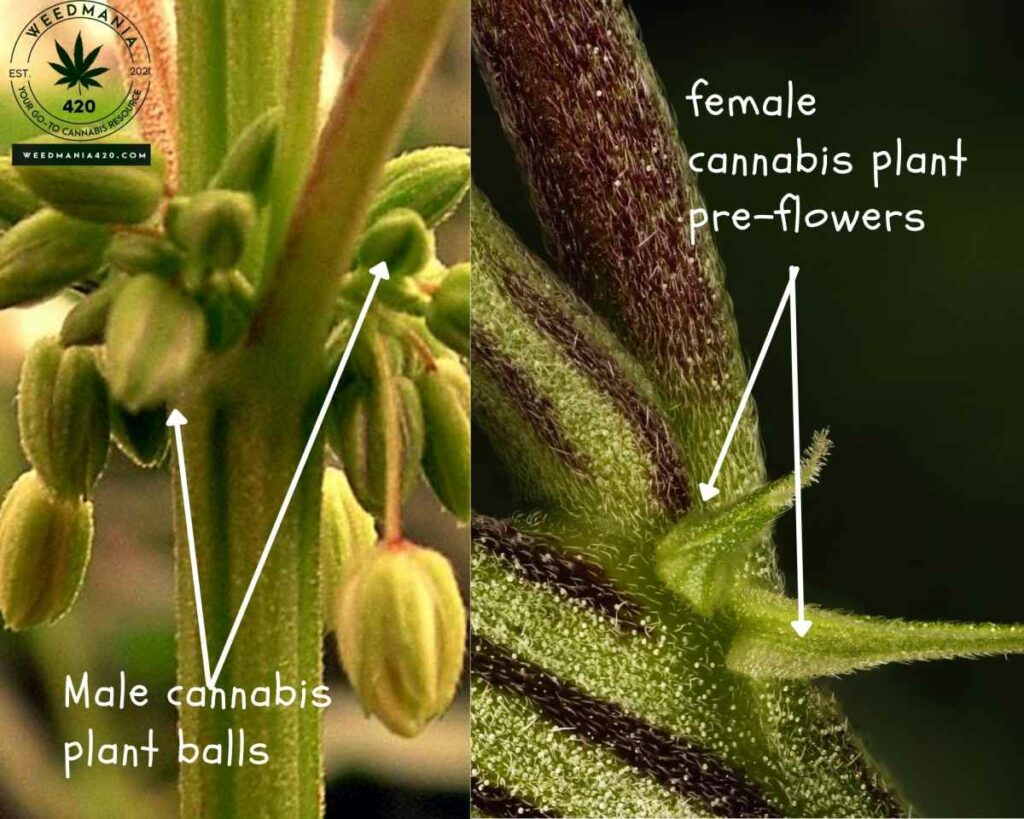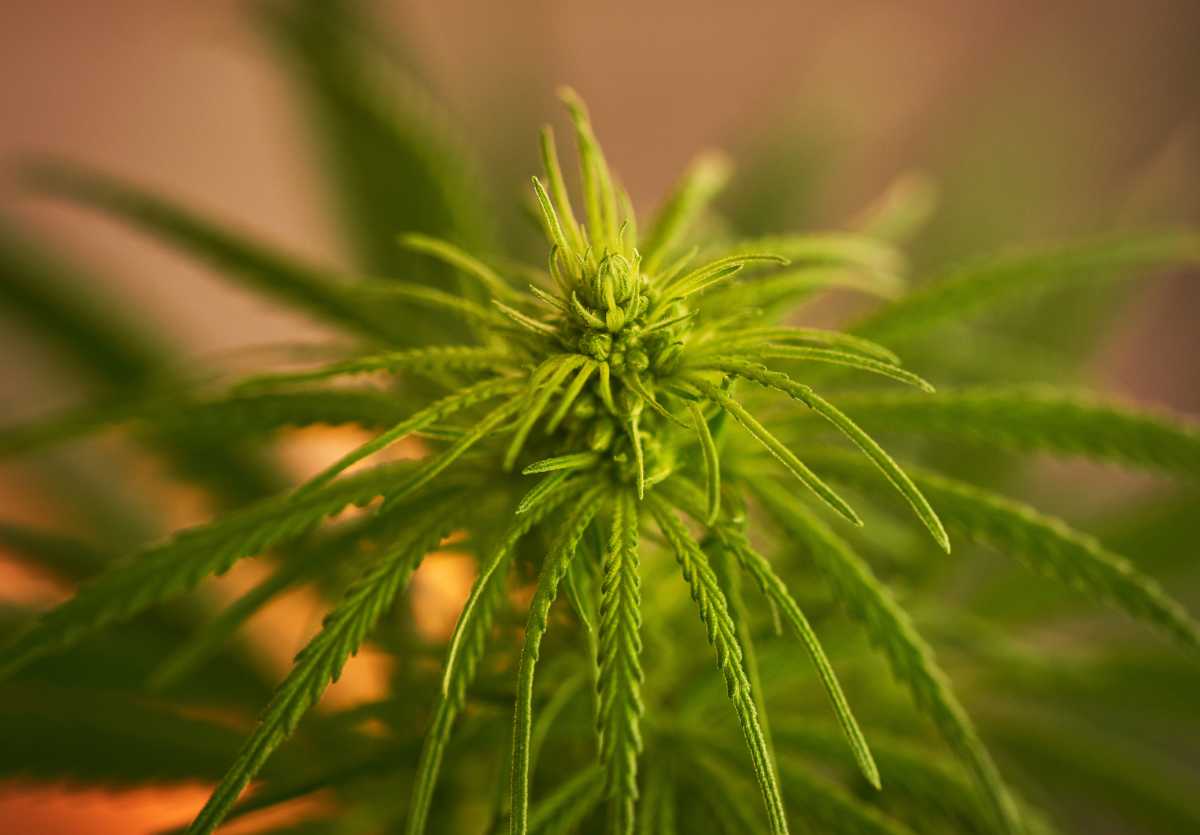Growers don’t like hermie plants.
For most growers, hermie plants aren’t worth keeping. They spoil the fun of growing and reduce the yield.
Unlike female plants that produce cannabinoid-rich buds, hermaphrodites produce seed-filled buds if you let them progress to harvesting. Let’s explore if hermie plants are worth keeping, really.
Seed-filled buds aren’t all that good. And though some growers even believe that seeded buds do not lack in potency, you never want to lose your chance at sinsemilla.
Besides, when one plant turns hermie, it can pollinate the other plants in the grow room. It also becomes a threat to other growers in your area.
Thus, for most growers, hermies spell doom. One of the reasons people choose to grow their own weed is to ensure the final product meets its intended use.
Don’t we all want to harvest sinsemilla— seedless buds that are highly concentrated in cannabinoids?
However, when you realize too late into the growing journey that your plant is hermie, chopping it off can be heart-wrenching.
That shouldn’t be the only way to use hermies because it takes resources to grow the plants. When confronted with hermies, most growers go for the salvage value, not total elimination.
Are Hermie Plants Worth Keeping?
When you have other plants in the grow room, then hermie plants aren’t worth keeping because they might pollinate your female plants. However, if it’s only one plant, you can still harvest it. The buds will be filled with seeds, but they will be potent enough.
It’s costly to grow a marijuana plant, and chopping the hermie can be wasteful when you have just one plant.
The seed-filled buds also mean you have less of the good stuff. Your yield will be reduced considerably because the plant will be nurturing the seeds too.

What Causes Hermie Plants?
Hermies can occur naturally if the plant grows from hermie seeds with hermie traits. However, a plant can turn hermie due to environmental stress. Keep an eye on these catalysts;
- Extreme temperatures
- Pruning stress
- Nutrient stress
- Disruptions in the lighting cycles
- Poor watering practices
- Toxic pesticides
- Pests and diseases
While any cannabis plant can turn hermie when stressed, some strains are more susceptible to herming. Thus, preventing herming starts with choosing more resilient strains.
Strains that herm easily can be disappointing because slight environmental stress makes them go nanners.
You should also pay attention to the environmental hazards specific to your growing conditions.
Certain yield-boosting practices like adding CO2 work best when the light’s intensity is high. Herming-prone strains might react negatively to the sudden change in intensity and herm.
You want to be sure the strains you grow are resilient enough for your yield-boosting practices.
Herming isn’t something you take lightly when you want top-shelf quality buds. When stressed, the female plant, in fear of dying before replicating, will develop male and female sexual organs to self-pollinate.
The plant does this in good faith, not caring whether you get healthy buds or seed-filled sacs. It does this to produce seed and ensure continuity of her lineage before the stressor kills it wholly.
Herming plants show nature’s grace towards continuity. That it can allow female plants to self-pollinate and produce seeds when males don’t rise to the occasion should be celebrated, but most growers can’t!
Herming robs the plant of its capacity to yield and nourish the buds. Once the plant herms, it will focus more on nurturing the seeds than the buds. Thus, the common opinion that hermies are less potent.
How Can You Avoid Hermie Plants?
You must keep your plant stress-free if you want to prevent herming. Light stress, heat stress, poor watering schedules, and pests are the primary culprits.
However, the first step to avoiding hermies is buying seeds from trusted breeders who understand plant genetics and breed plants with robust straits.
Other keeping the growing conditions ideal, stay vigilant. It is possible to stop hermies in their tracks when you spot them earlier.
When herming isn’t far-spread, you can remove the few male flowers and eliminate the risk of pollination.
Herming can occur at any stage of the plant’s growth. Thus, make a habit of touring the grow room, studying the plants, and removing male flowers as soon as you can know the difference.
The distance between your hermie plants and your female plants matter. Check out this lengthy article on how far a male plant can pollinate a female plant.
Male flowers will be the claw-like nodes, what most growers call nanners. When you remove them at this stage, you can save the plant if it has stopped producing the male flowers.
Removing them earlier saves the herming plant, the plants in the grow room and the grower’s farms in your area.
Pollens are better avoided than stopped. Once it begins spreading, you can save neither the herming plant nor the rest of the plants.
I wrote an insightful guide on sexing cannabis, it can help you identify the males and hermie plants before they’re mature enough to pollinate your female plants and spoil your chances of ever getting sinsemilla.
Note: While it’s prudent to save the herming plant, weigh the damage it might cause your entire grow. Sometimes, eliminating the plant is the only way to deal with it. It makes sense to lose one plant to save the rest. A life for lives!
Tips For Removing Pollen Sacs From Hermie Plants
While most growers spot the male flowers too late, you can save herming plants when you spot them earlier. But keeping the herming plant must be done cautiously because any pollen shake will pollinate the neighboring plants.
Here are a few tips to help you remove the pollen sacs;
- Use a sharp razor— Use a sharp razor that cuts with minimal effort. You don’t want to use a blunt cutter because they aggravate the damage.
- Isolate the herming plant— If there’s just one plant turning hermie in the grow room, isolate it to another room to avoid accidental pollen spills to the other plants. Be cautious when moving the plant into isolation not to shake the pollen dust within the grow room. You can cover the whole plant with plastic bags while on transit to contain the spread of pollen dust.
- Place the catcher closely under the flower— Placing the catcher closely reduces the impact when the pollen-sacs hit the surface. If you’re using a tray, the further it gets from the male flower, the harder it falls, which might make it burst and spread the pollen in the air. You can further contain the pollen by making the landing surface moist to trap pollen grains if the sac opens.
- Use sealable plastic bags to collect the male flowers— Ziploc bags are good because what goes in stays in. If the pollen sacs burst in a ziploc bag, they don’t fly out, and when you throw them away, you’re assured they will suffocate and die— in the bag!
Frequently Asked Questions About Hermies
You can stop a herming plant if you spot the male flowers early before they release the pollen. However, if the herming was genetic and not caused by stressors, the plant will continue producing more male flowers, and if you continue cutting them away, it might get more stressed— and summon more male flowers.
Other being seed-filled, buds from hermie plants are worth smoking. It takes longer to prepare them for consumption, but they are good enough for a good toke. Compared to sinsemilla, hermie buds contain less cannabinoid concentrations because the plant nurtured the seeds too.
The easiest way to know if your female plant has been pollinated is to watch out for the bracts enlargement. When pollinated, the plant begins to grow seeds, enlarging the bracts. Also, study the color changes on the pistils. When pollinated, the previous white hairs will shrink and turn darker.
While herming can be genetic, most female plants turn hermaphrodites due to environmental stress. Heat and light stress are major culprits, but poor watering practices, interrupting light cycles, and nutrient problems can cause herming in healthy female plants.
Hermie plants will produce a mix of female seeds and hermie seeds. There is no known ratio of female seeds: hermie seeds, but you can have viable female seeds from hermaphrodite plants.
In conclusion, keeping herming plants is risky because it can pollinate the other female plants when growing many plants. However, if you only have one plant in the tent, it makes sense to grow it until you harvest it.
Another factor to consider is whether the herming is caused by genetics or environmental stress. For stressed plants, gently cutting out the pollen sacs will allow the female flowers on the plant to blossom.
If it’s in the genes, the plant will continue to bring out more male flowers, and you can only cut for so long before the stress from the cuts hurt your plant.
External References:

